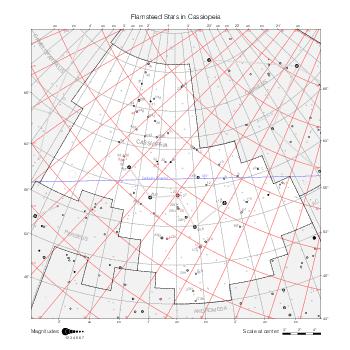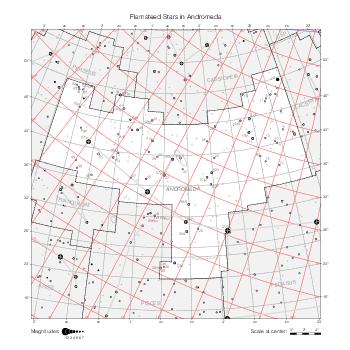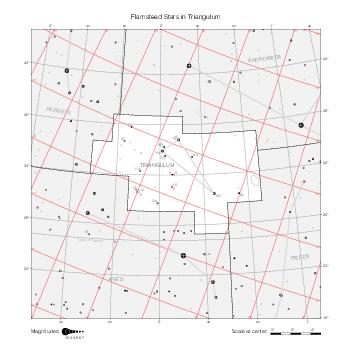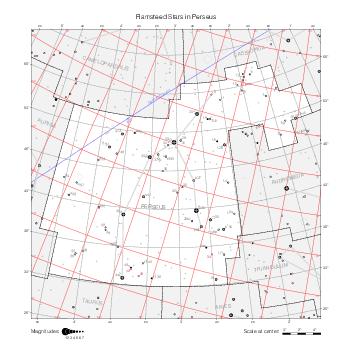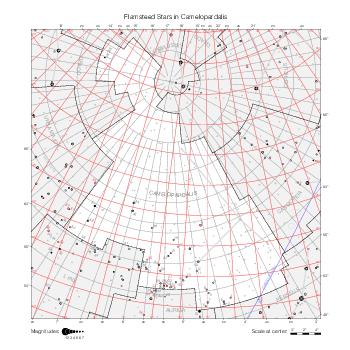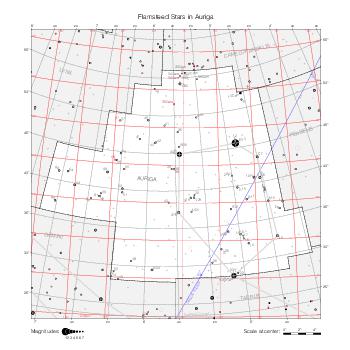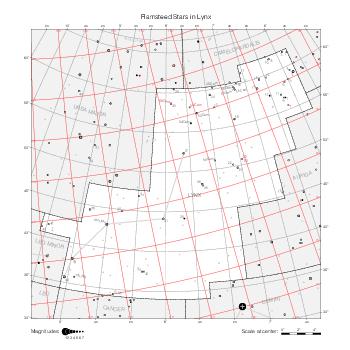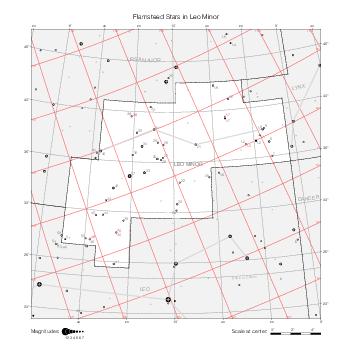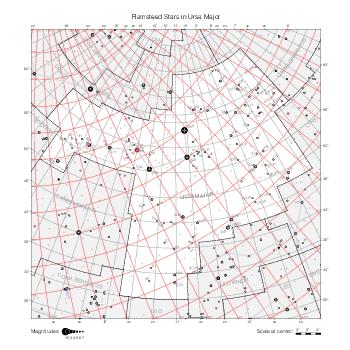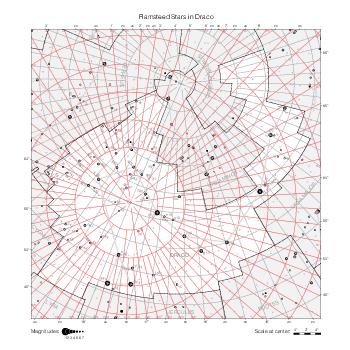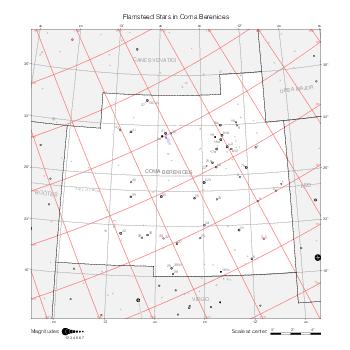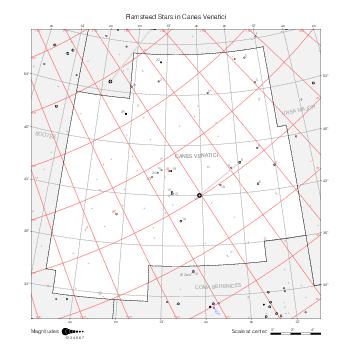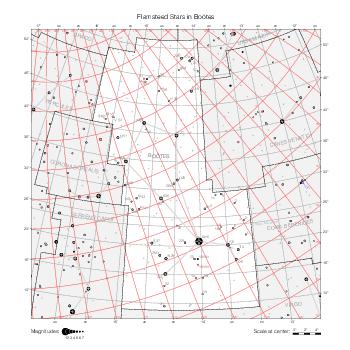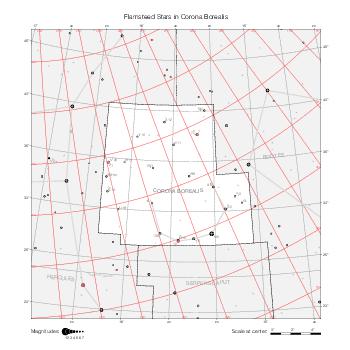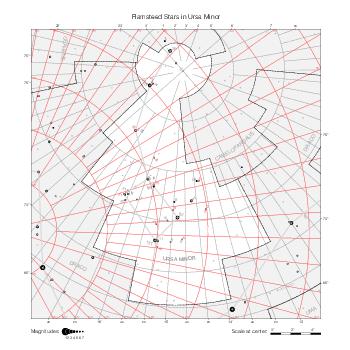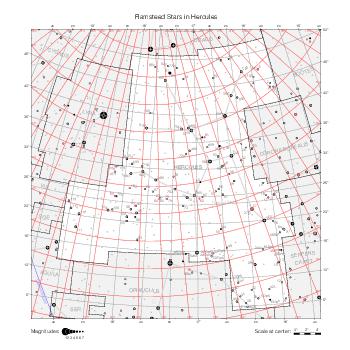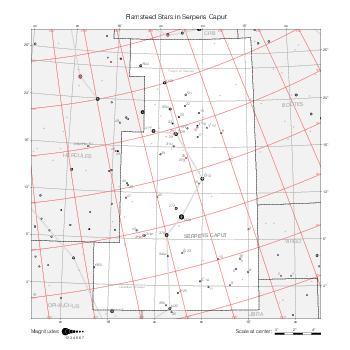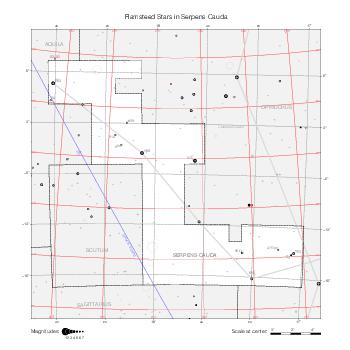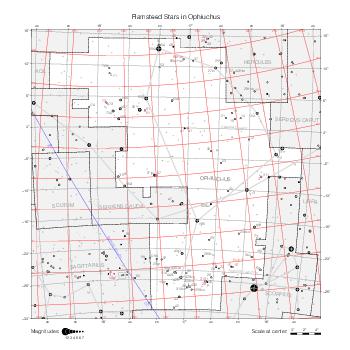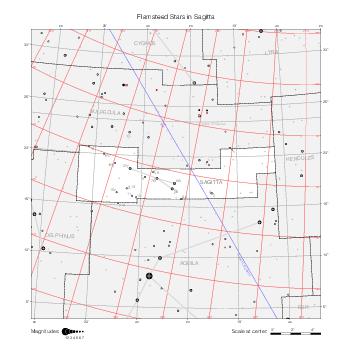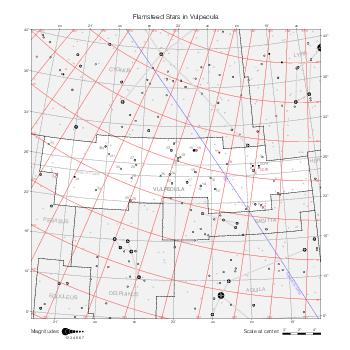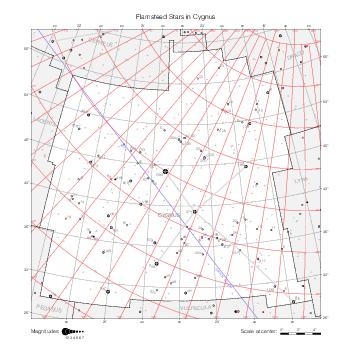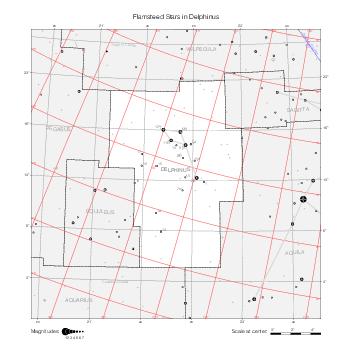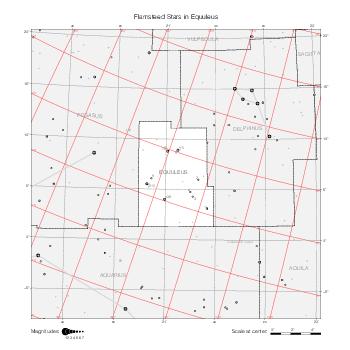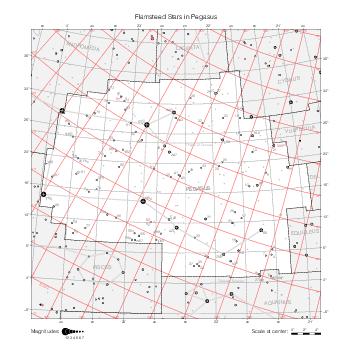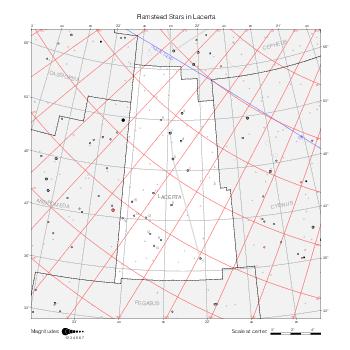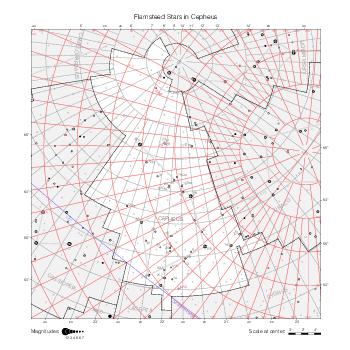Description
The star maps below give graphical representations of Flamsteed's catalog, illustrating some of the features described on the previous page. They use the equatorial and ecliptic coordinate systems corresponding to the catalog's equinox January 1st, 1690 (1689 Annum Completum) of the Julian Calendar, or
| Julian Day | 2,338,331 |
| Besselian epoch | B1690.0316… |
| Julian epoch | J1690.0369… |
The ecliptic coordinate system uses the obliquity value computed according to the IAU 2006 precession model, close to 23°28'47", which differs only slightly from Flamsteed's value 23°29'00" used to compute the catalog's ecliptic coordinates.
Catalog stars are represented according to Flamsteed's equatorial positions and magnitudes from the catalog. Their representation and the general features of the maps are described on the historical catalogs page.
Magnitudes given as a range have been "interpolated by thirds", so that the range 3-4 corresponds to the value 3.33 and the range 4-3 to 3.66, for instance. In the catalog, the magnitude is sometimes replaced by the abbreviation tel (telescopic), neb (nebulous), obs (obscure), or completely absent. I have assigned arbitrary magnitude values to these special cases according to the following table.
| Magnitude | Assigned value | Cases |
|---|---|---|
| none | 6.0 | 10 cases |
| obs | 7.0 | 7 Cap, 10 Cap, 12 Cap |
| tel | 8.0 | 7 Ari |
| neb | 4.0 | 33 And, 55 And |
Catalog entries are labeled with their Flamsteed number within the constellation and their Bayer-style letters as assigned by Flamsteed. No correction has been applied to Flamsteed's letters, even the ones likely affected by typographical errors (for instance, 65 Psc is labeled iota instead of i as mentioned by Baily in the notes to his updated version of the British Catalogue).
Baily's corrections
The maps also represent in red the positions corrected or supplied by Francis Baily in his updated version of the British Catalogue, as explained on the previous page. These corrections bring all the existing stars of the catalog in pretty good agreement with their modern positions.
With these conventions in place, all the Flamsteed stars appear on the maps except 5 Cyg and 38 Cyg which remain without position even after applying the corrections (they are listed as non-existent anyway). The other non-existent stars appear as disks without reference star nearby.
Maps by constellation
The maps below cover one constellation at a times. They are arranged in the same order as the constellations in Flamsteed's catalog. Maps covering Microscopium and Scutum have been added because they contain stars respectively assigned by Flamsteed to Piscis Austrinus and Aquila that would not be visible on any other map.
Zodiacal constellations
Aries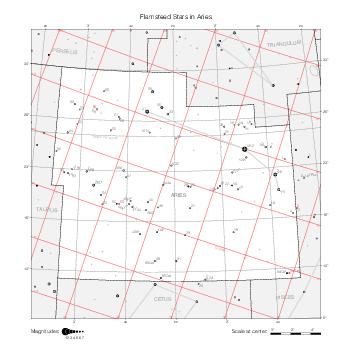
|
Taurus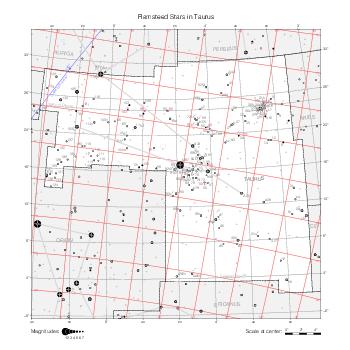
|
Gemini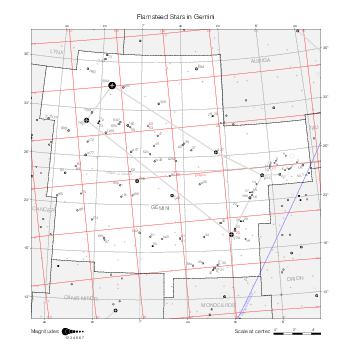
|
Cancer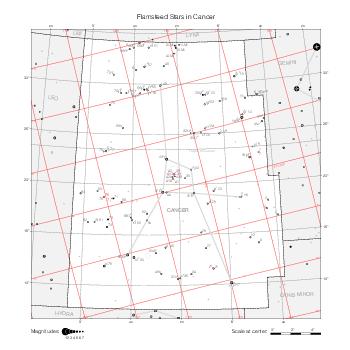
|
Leo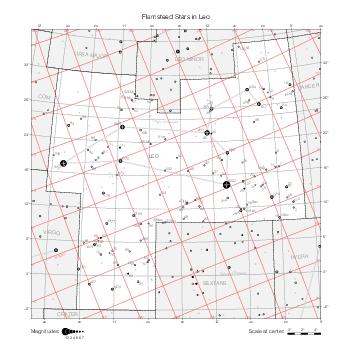
|
Virgo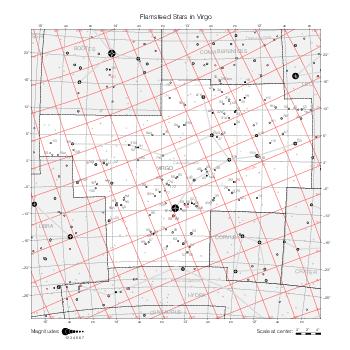
|
Libra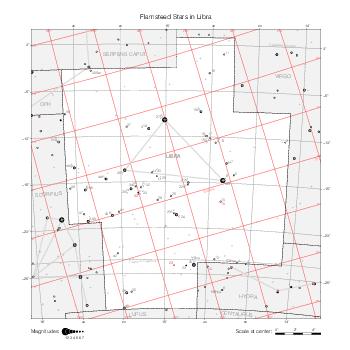
|
Scorpius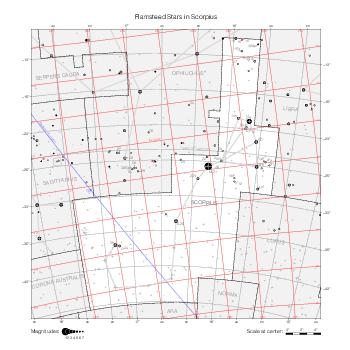
|
Sagittarius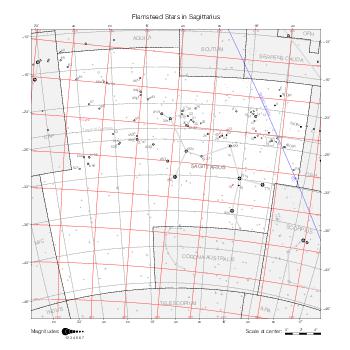
|
Capricornus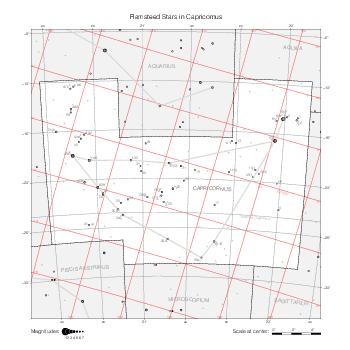
|
Aquarius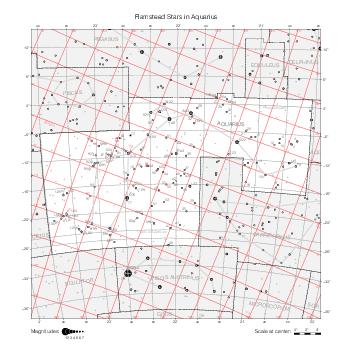
|
Pisces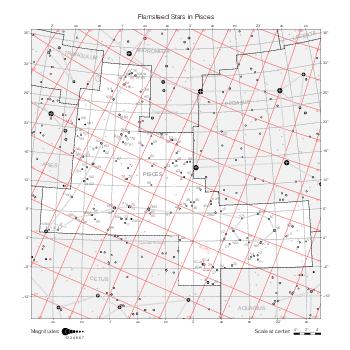
|
Southern constellations
Cetus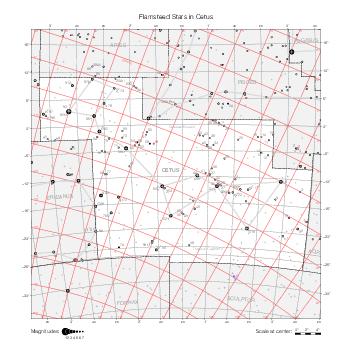
|
Eridanus (N)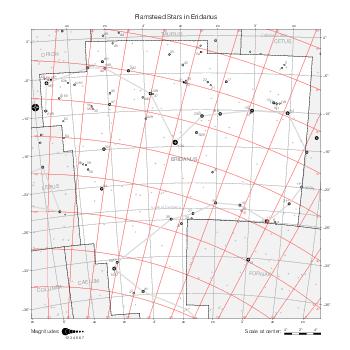
|
Orion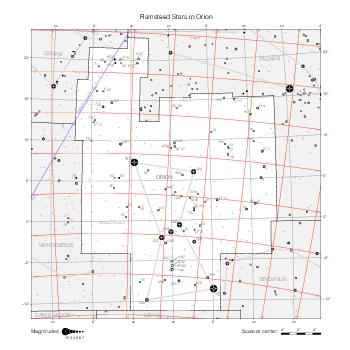
|
Lepus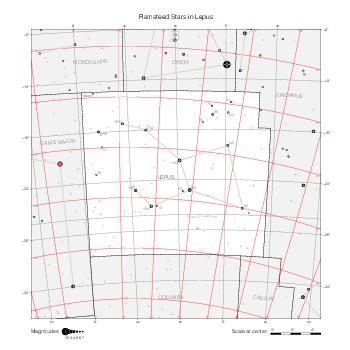
|
Monoceros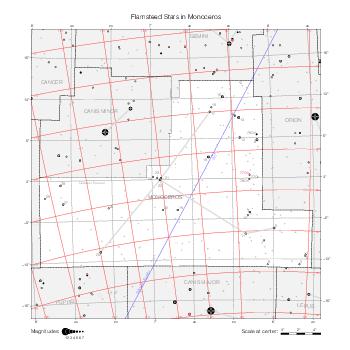
|
Canis Major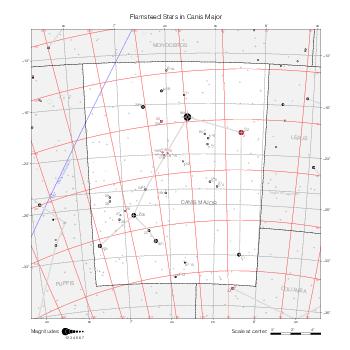
|
Canis Minor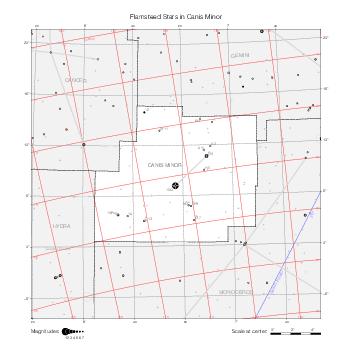
|
Puppis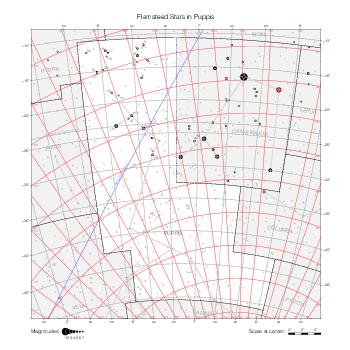
|
Hydra (W)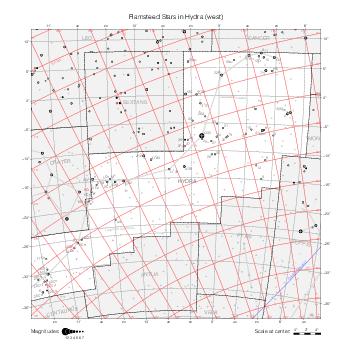
|
Crater
|
Hydra (E)
|
Corvus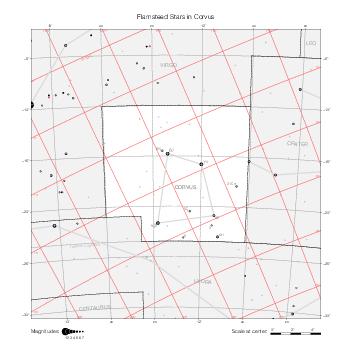
|
Sextans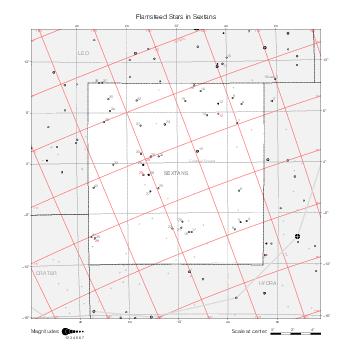
|
Centaurus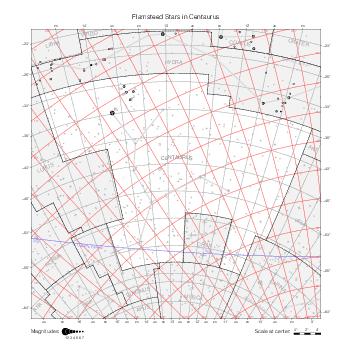
|
Lupus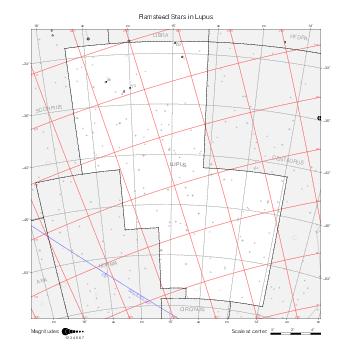
|
Piscis Austrinus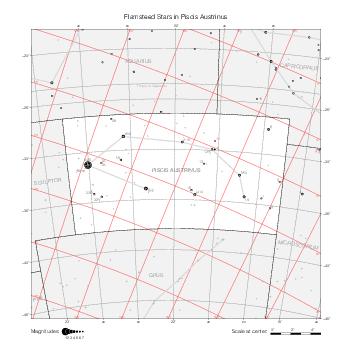
|
PsA (in Mic)
|
Northern constellations
Maps by hemisphere
The two maps below give an overall view of Flamsteed's catalogs one hemisphere at a time.
They are centered on the equatorial poles of the B1875.0 coordinate system, the reference for constellation boundaries, and present the same contents as the maps by constellation.
Northern Hemisphere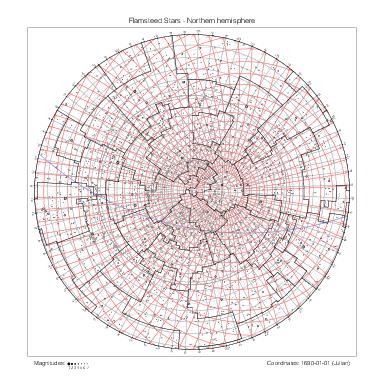
|
Southern Hemisphere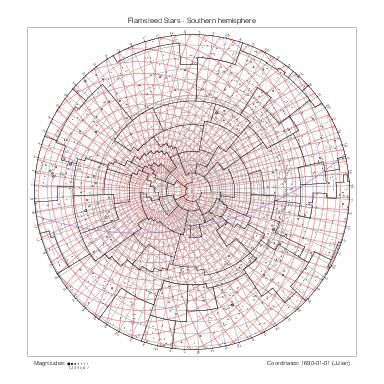
|



